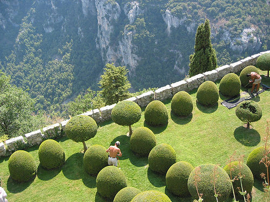4 Rules of Composition for Landscape Photography
While I’m not always a fan of sticking strictly to the ‘rules’ or ‘guidelines’ of photography I think they can be well worth knowing and keeping in the back of your mind as you shoot (whether it’s so you can follow them or break them for effect). Here’s four ‘rules’ for landscape photography that might be helpful for those just starting out (ie they’re not meant as a definitive guide but rather a starting point) :
1. Diagonal Lines

The ‘lines’ need not be actual lines – they could be the shape of a path, a line of trees, a fence, river or any other feature in an image.
Converging lines (two or more lines coming from different parts of an image to a single point) can be all the more effective.
Read more about using Diagonal Lines in your digital photography.
2. Geometric Shapes

Using Geometric Shapes in this way isn’t something that I’ve done a lot of – but it is one technique to get balance in a shot and if you’re clever, to lead the eye into it (in a similar way to the diagonal lines rule above).
You can see this illustrated (to a point) in the photomontage image to the right.
3. The Rule of Thirds

Position key points of interest in a landscape on the intersecting point between imaginary ‘third’ points in an image and you’ll help give your image balance and help those focal points to really capture attention.
Read more about using the Rule of Thirds in composing your shots.
4. Framing Images

Perhaps the most common way of framing a landscape shot is to include an overhanging branch in the upper section of a shot. Similarly framing a shot with a bridge might work.



.gif)





